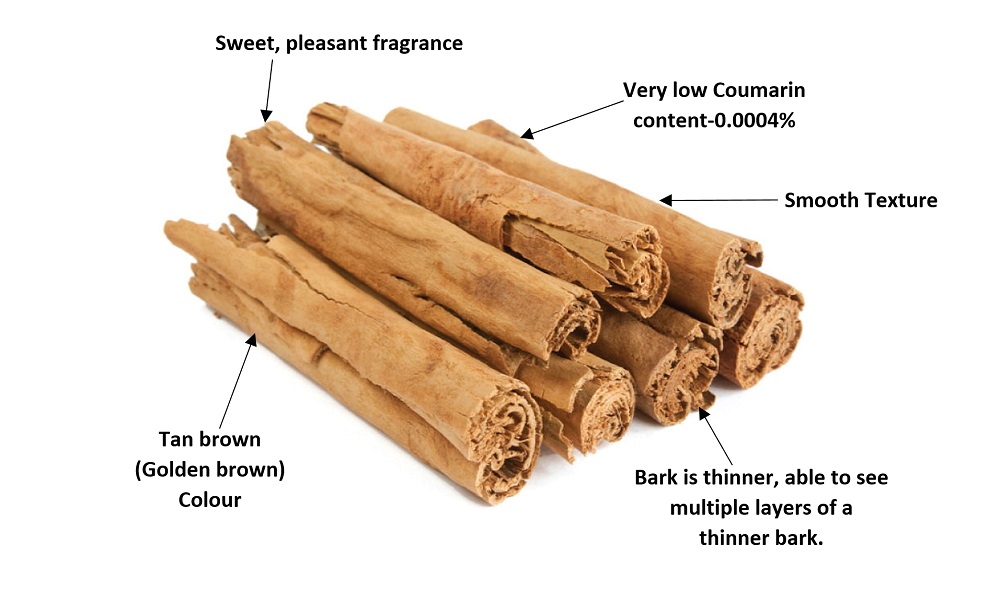
When it comes to Cinnamon there are two types that often confuse the consumers whereas for the ones who understand cinnamon based on quality tend to prefer Ceylon cinnamon. In short, there are two main types of cinnamon on one we have Ceylon Cinnamon also known as Cinnamomum Zeylanicum, Cinnamomum Verum, and the other one being Cassia Cinnamon (Cinnamomum Cassia).
Firstly when we take Ceylon cinnamon (Cinnamomum Zeylanicum, Cinnamomum Verum) this type of cinnamon contains the word “Verum” which is a Latin word along with verus which means “True” which provides an indication to mean that Ceylon cinnamon is unquestionably the best when it comes to Cinnamon.
Ceylon Cinnamon is much less commonly found than cassia cinnamon in the context of the global market. One main reason for this is that Ceylon cinnamon cannot originate from elsewhere in the world than in Sri Lanka mainly due to the weather and soil condition in the country. Further, when it comes to exports this cinnamon is mainly exported to the European market while cassia cinnamon is mostly consumed in the USA and Asia.

The difference in the Texture
When it comes to differentiating Cassia and Ceylon cinnamon there is one difference in the texture of the cassia and Ceylon cinnamon sticks, when you observe the bottom of the Cassia stick there you will see the end, which comprises of a thick bark where they look exactly as a one-piece and thick bark layer does not facilitate in showing any other layers. Whereas for Ceylon cinnamon stick the bark is thinner compared to Cassia, where the thinner allows the visibility of multiple layers to be seen this thinner layering of bark is one of the indications of true cinnamon.
Texture Colour and Cinnamaldehyde Content
Moreover, cassia cinnamon tends to be the dark brown-red colour with a rough texture and made of around 95% cinnamaldehyde, which gives cassia a very strong spicy flavour. However, Ceylon cinnamon is tan-brown and has around 50-60% cinnamaldehyde. Cassia cinnamon tends to taste stronger and hotter whereas Ceylon cinnamon is full of lighter, brighter, and has more of a citreous tone.
Coumarins Content
One element which distinguishes both Ceylon cinnamon and cassia cinnamon coumarins content. Coumarins are naturally occurring plant components that can have strong anticoagulant properties. Ceylon cinnamon appears to be very small and lower than the amount that could cause health risks, the level of naturally occurring coumarins in the cassia cinnamons appears to be higher and may pose a risk to some individuals if consumed in substantial amounts regularly and also high levels of Coumarins, which is not advisable as they tend to be accountable for the organ for much of the body’s filtering processes.
Scientists’ Opinion
As per the study conducted by BFR (Federal Institute for Risk Assessment in Berlin) has warned that anyone who regularly consuming cassia cinnamon more than 2gs’ a day for an adult this could permanent liver damages. As a result of this European Union has implemented certain guidelines that safeguard the consumer from overconsumption by maintaining the balance of the maximum content of coumarins to be permitted for food items. Likewise, Denmark, food authority have placed a limit on how much cassia cinnamon can be used in their bakery items.
Summary of the difference between Ceylon cinnamon and Cassia cinnamon



